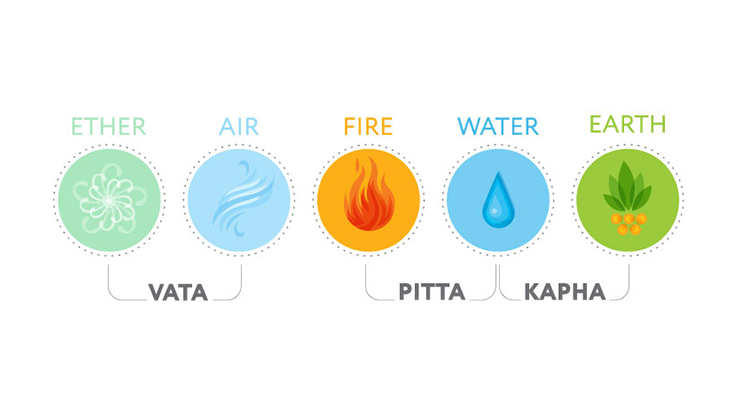According to the Ayurveda, there are three types of bodies or say Dosha, Vata, Pitta and Kapha.
The person’s nature, likes, dislikes, foods, these factors depend upon which Dosha is dominating. As per Ayurveda, many diseases and health-related issues happen when these Dosha are not balanced.
A proper balance between the three Doshas (vata, pitta and kapha) defines the health of a person both physical and mental health. In the Sanskrit language, the meaning of Ayurveda is the “science of life and longevity.’
In Ayurveda, they first focus on the holistic way of treatments and then using chemicals based drugs for a quick recovery.
Ayurveda is a way of living and when you live in a certain way where you eat and drink healthy, and follow some rules and take precautions, your body becomes like a shield and dealing with health issues becomes much easier compared to others.
Ayurvedic treatments are one of the most ancient ways of treatment to heal and cure any ailments and therefore Ayurveda work on the balance of mind, body and spirit.
The five elements in Ayurveda
As per Ayurveda, every individual is born with life energy or say life force that comprises earth, water, fire, air, and space, and these are the five elements. Every person strikes a unique balance of these five elements, and they are called Dosha. But every person has a dominating Dosha, and that is what we will find out today.
Vata Dosha – This Dosha comprise space and air.
Pitta Dosha – This Dosha comprise fire and water.
Kapha Dosha – This Dosha comprise earth and water.
Vata Dosha works on the movement of energies; Pitta Dosha work on the metabolism and digestion, and Kapha Dosha work on the structure and lubrication. To maintain health, every individual needs to maintain a balance among these three Doshas. If one of these three Doshas increases or decreases, this can lead to many health problems.
In Ayurveda, the meaning of health is the balance between vata, pitta and kapha. These three Doshas get disturbed due to:
- Stress.
- Repressed emotions.
- Unhealthy diet.
- No exercise
Mainly a sedentary lifestyle, along with no physical activities, and an unhealthy diet leads to the imbalance of these three Doshas. Each individual has these three Doshas: vata, pitta and kapha. But as per
Ayurveda each person has a primary, secondary and the least prominent Dosha.
Vata Dosha – Pitta Dosha and Kapha Dosha:
1. Vata: According to the Ayurveda, Vata Dosha is known to be the leader among the three Doshas. Vata Dosha is responsible for the functioning of all the activities happens in our system including our physiological and psychological functioning. Vata Dosha is responsible for the beating of our hearts, breathing and blinking of our eyes. If the vata dosha is imbalanced, then you might face problems like cough, dry hair, and dry skin.
2. Pitta: The pitta dosha is responsible for maintaining our body temperature through the chemical transformation of the food we eat. Pitta Dosha is responsible for nutrition, absorption, metabolism and digestion. People with dominant pitta dosha seem to have leadership qualities, determined and strong-willed in nature. Pitta dosha is also helpful to promote appetite and vitality, but the imbalance of this dosha may lead to problems like ulcer, anger, inflammation and agitation.
3. Kapha: The Kapha dosha is responsible for the resistance in the body, growth and creation of new cells. Kapha dosha is also responsible for the process of building the body, and for anabolism. People with dominant Kapha dosha seem to be more calm, steady and thoughtful in nature. If you are this type and want to maintain the Kapha dosha, then it is important to consume extra fluids, gentle exercises, stimulating activities and this will help you maintain balance.
Follows these steps to balance your Doshas: Vata, Pitta, and Kapha
1. To balance the Kapha dosha, one should eat foods that are pungent, low-fat, astringent tastes, and a light. Foods that can help to balance the Kapha dosha are millets, honey, cloves, rye, turmeric, barley, pepper, oats, and cardamom. Foods that you need to avoid are milk, fats, and rice.
2. To balance the Vata dosha one should eat a dish that is sweet, moist, warm, salty, and sour taste like a dish easy to digest. Foods that are good to balance Vata Dosha are ginger, cinnamon, rice, cumin, leafy vegetables, wheat, broccoli and wheat. Other foods that are good to cure the imbalance of vata dosha are soups, melons, yogurt, stews, and berries. Foods that are also beneficial like buttermilk, eggs, coconuts, seeds, whole milk, cheese, and avocado. People who are Vata dominating should consume less fatty foods, and they can drink warm milk at night.
3. To balance the Pitta Dosha one should eat astringent, sweet, heavy, bitter, and cool foods like curry leaves, dairy products, oats, sweet fruits, and mint. Foods that you should avoid are red meat, potatoes, eggplant or brinjal, sour fruits, and tomatoes. Also, you need to avoid foods that are oily, fried, fermented, salty, spicy and acidic in nature.
One of the best ways to be healthy and to maintain the imbalance of doshas is to have your meal on time. Foods that include fruits and vegetable of that season are best for your overall health and fitness.

